|
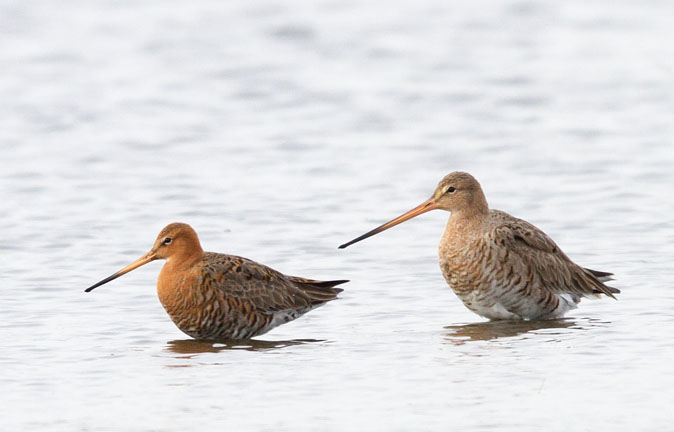
Icelandic Godwit male at the left (Limosa islandica; Barge à queue noire islandaise),
'Dutch' female (long bill) at the right. 7 March 2013
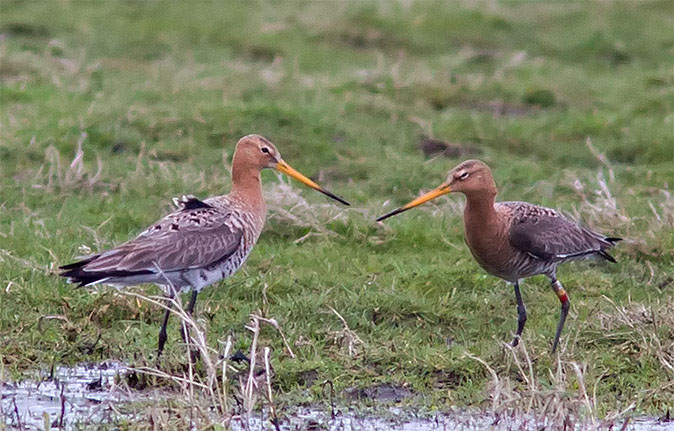
Black-tailed Godwits (Limosa limosa; Barge à queue noire), female at the left, male at the right. 3 April 2008
Tómas Gunnarsson, the Icelandic Godwit expert, told me that he once identified a Godwit in the Algarve, Portugal,
as Limosa limosa ('our' Black-tailed Godwit), until its legs revealed rings that Tómas himself had attached
to a breeding male (islandica) in Iceland!
An unnerving experience for him, and ever since he has been extremely careful in determining any sighting.
This anecdote shows how difficult it is to differentiate between the Dutch breeding population of BT Godwits
(which I'll refer to as 'limosa') and the Icelandic BT Godwits (referred to as 'islandica').
There is one certainty (up to now…): the breeding population in Iceland comprises only islandicas,
there are no limosas over there and hybrid birds have never been reported.
(The official names of the two races are: Limosa limosa limosa and Limosa limosa islandica.)

Icelandic Godwit (Limosa islandica), male. 12 March 2013
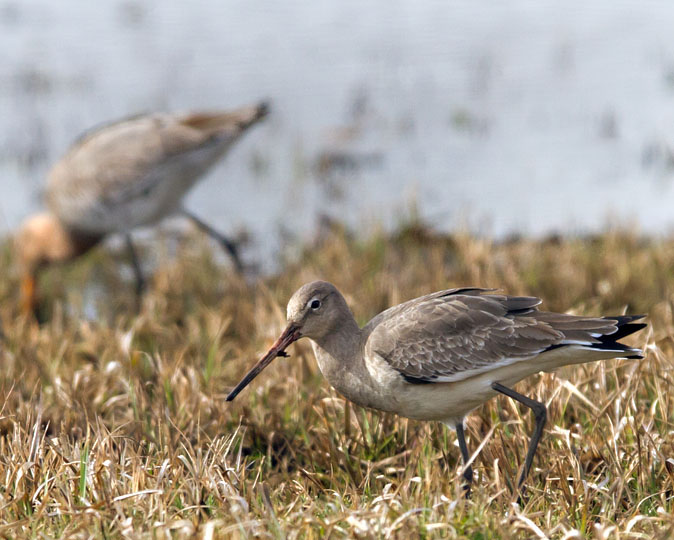
Icelandic Godwit (Limosa islandica), also a male! 7 March 2013
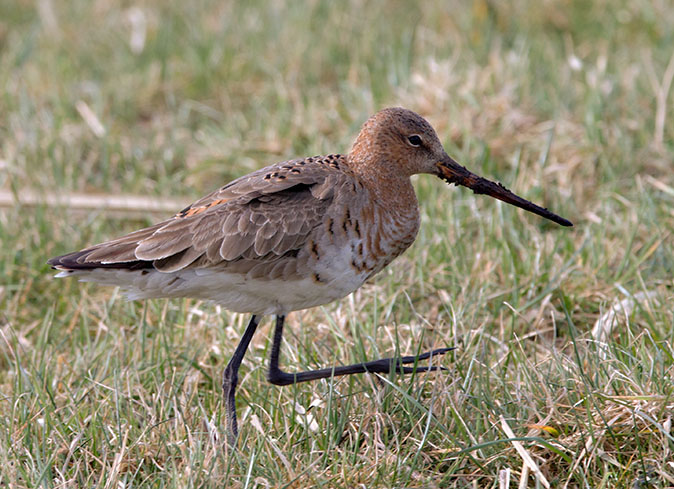
Probably a male limosa (Limosa islandica). 7 March 2013.
The head and neck plumage suggests limosa race, the upper legs look too long for islandcia.
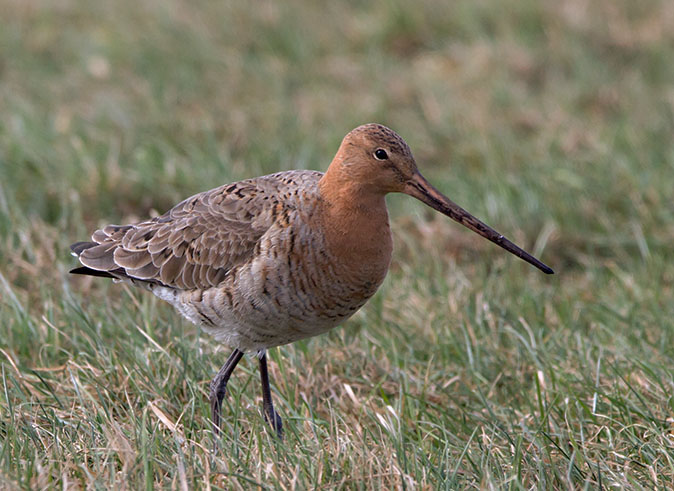
Icelandic Godwit (Limosa islandica), female. 7 March 2013
Not quite sure: bill looks long for an islandica.
Identification problems occur only in spring and autumn when both (sub-)species form mixed groups in wetlands
where they congregate prior to their journey to the breeding or wintering areas.
Close observation will often show differences, especially in April when moulting is advanced.
There is some overlap, though, and one characteristic does not suffice for a positive identification,
which can sometimes be downright impossible.
Aided by Tómas and relevant literature I have here collated the most striking differences.
Generally speaking, limosa is larger and of lighter coloration than islandica. In both races females are bigger than males,
which also goes for the bills. Yet note that limosas have longer bills than islandicas, but varying individual differences
between species and sexes do not make for easy identification.
Limosas usually stand a little taller than islandicas (again with individual variations).
Neither length of leg nor length of bill is decisive for identification.
The shape of the head is an important ID factor: not always easy to see in the field as birds tend to move about.
Limosa has a rather high base of the bill creating a more gradual transition to the forehead
and consequently the forehead looks flatter. Islandica has a lower bill, making their heads more rounded.
There is an unsubstantiated assumption that islandica has a larger salt-gland than limosa. This gland is situated
in the head and enables birds to drink salt water and true enough, islandicas are often found in salt water areas.
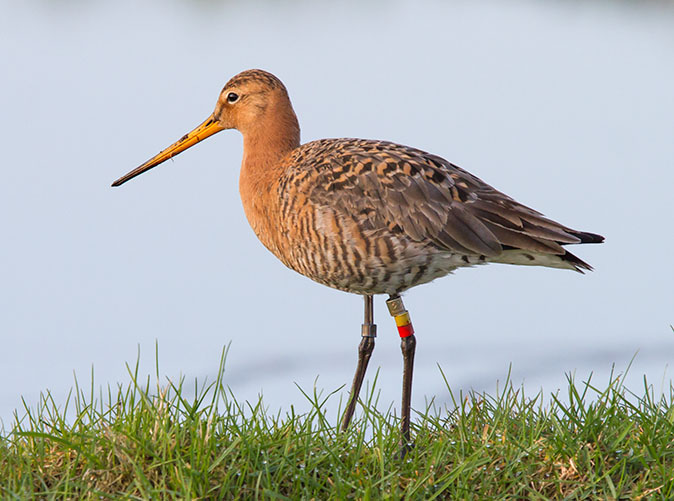
Black-tailed Godwit (Limosa limosa), male. 6 April 2010
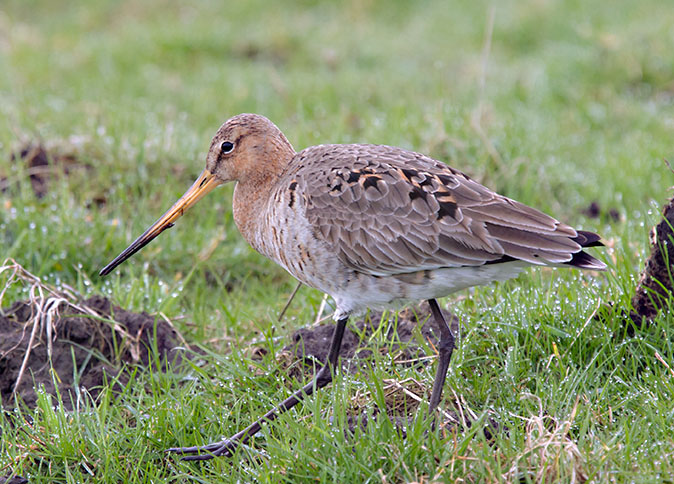
Black-tailed Godwit (Limosa limosa), female. 2 April 2010.
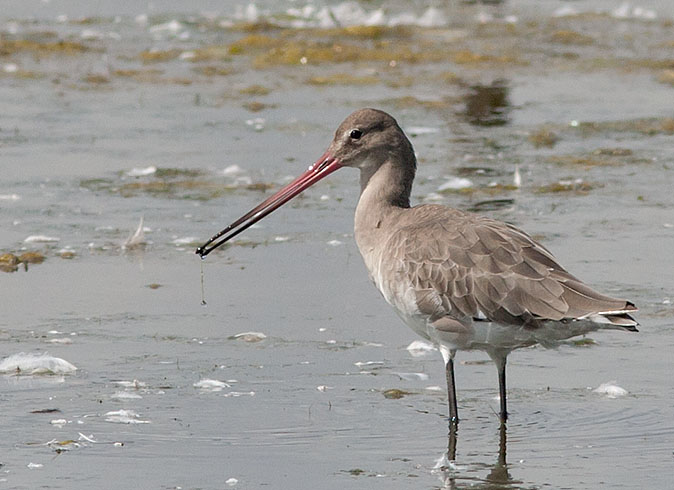
Black-tailed Godwit (Limosa limosa), female. 13 July 2009

Black-tailed Godwit (Limosa limosa), male. Or a female? 9 May 2011
In winter both (sub-)species are grey and difficult to tell apart. When moulting sets in, it gradually becomes clear
that islandica's feathers are a deeper shade of red compared to limosa's. Males are more colourful than females.
Limosa shows an orangy-red colour, whereas islandica has a deep and uniform reddish-brown hue.
There is a dark banding on the belly area, which in islandica extends from the leg to the vent. Islandicas that have almost
finished moulting have grey wing coverts contrasting sharply with the red feathers. Limosas show brown wing coverts.
Putting this on paper seems relatively easy, but recognizing birds in the field is a lot more complicated.
To be certain, you have to combine a number of characteristics. Doesn't that make birding exciting: what am I looking at?
Translation: Edmond A. van Estrik
BACK
|










